Gaza

After the Hamas take-over in Gaza in 2007 (History and Background) Israel and Egypt closed the border crossings. The humanitarian situation was beyond belief. Figures for truckloads per month entering Gaza are as follows (see ZNet ‘Question and Answer’, taken from OCHA ‘Humanitarian Monitor’ (Further Information, Bibliography): Dec. 2005 (before Hamas came to power) 13,430; May 2007, 10,921; March 2008, 3,399 (at which time humanitarian agencies spoke of a ‘humanitarian implosion’). But note what happened during the summer and autumn of 2008. May 2008 was only 1,821; July, after the Israel/Hamas truce, it went up to 5,028; but then Aug. 3,565; Sept. 4,069; Oct 2,823, and Nov. only 579. In a final twist of irony, Israel collects import duties on any goods it allows into Gaza!
In December 2008 with Bush’s term in office coming to an end, Israel seized the pretext of the end of the 6-months truce to launch a full-scale war on Gaza: see History and Background. The aim was presumably to send a message of zero tolerance of any form of Palestinian resistance to the occupation of the West Bank and siege of Gaza. Further (it is thought) to weaken Hamas sufficiently that a compliant Fatah could be established in a ‘pacified’ Gaza in its place; but Hamas survived. Some judge that the IDF wished to re-assert its prowess after the ‘humiliating’ defeat at the hands of Hezbollah in the Lebanon in 2006.
The ensuing war lies beyond description. Figures are as follows:
It is clear that, contrary to Israeli propaganda, unarmed civilians were targeted. (Goldstone Report.) Israeli surveillance enabled them to know what was going on in every square foot of Gaza; the UN gave it co-ordinates of their buildings. School and UN buildings, a police cadet school, the power plant and houses were targeted. Use was made of white phosphorus bombs. On occasion a house was blown open by an ordinary bomb, a white phosphorus bomb thrown in, and then the ambulance going to get the people bombed. There is no shelter and nowhere to hide in Gaza, a densely built up area. It seems that many of the ’phone calls made from Israel to ‘warn’ people were fake, designed to cause confusion, for other buildings were then targeted. When people fled to what seemed to be safer places the occupancy of the house was such that the thermal signature was picked up by unmanned aviation vehicles, which sent a message that people were gathered there and so missiles were dropped on them. Severe long-term environmental damage has been done to Gaza which is a densely inhabited area. Meanwhile news has come through of birth defects among children born to women exposed to white phosphorus and other chemicals used in Israeli weapons (The Palestine Telegraph, 04.02.10.)
Perhaps the single most unforgivable thing about the campaign was that the exit points to Israel and also to Egypt were closed, so that the people were trapped and defenceless. Human Rights Watch reported that, after the initial aerial bombardment, only four critically injured patients had been transferred to Israel since the start of the conflict, in part because Israel demanded financial guarantees for the medical costs of wounded Palestinians. With the opening of the ground campaign on 3 Jan. transfers to Israel ended. Children were given drugs and died; or needed to have operations to clean them. Nor were supplies which would have enabled people to rebuild their shattered lives allowed in once the war ended. Bags of concrete remained stacked against the lamp posts on the Egyptian side of the Rafah crossing. At first people were not even permitted to cross the border to reach hospitals and many died, though a trickle then started to come through.
On 17 June 2009, six months after the end of the war, former US President Jimmy Carter visited Gaza and had three hours of talks with Ismail Haniyeh. Condemning the continuing blockade of Gaza, which he said treated Gaza’s 1.5 million people ‘more like animals than human beings’, Carter was later to remark: ‘Never before in history has a community been savaged by bombs and missiles and then deprived of the means to repair itself.’ The issue as to who controls Gaza, he added, is irrelevant, since there are internationally acceptable channels where goods could be inspected. Carter noted that an Israeli-US delegation was prevented from bringing in toys and children’s play equipment ‘slides, swings, kites and magic castles’; even crayons and paper were treated as a ‘security hazard’.
The terms of the Rafah land crossing to Egypt is that it shall be monitored by the EU, but that Israel should be given real-time video and allowed to deny entry to anyone. In effect this border was closed from the Hamas take-over of Gaza in the summer of 2007 until May 2011 after the fall of the Mubarak regime. There is a crossing on the border with Israel at Karni with back-to-back unloading/loading for lorries, but that has been closed, only the conveyor belt for cattle feed letting something through. It must be stunning that Egypt – or the world community – does not simply insist on the border being fully opened. Israel would be unlikely to bomb the UK, or US, navy on a mission to open the port of Gaza. Internationals have of course tried to break the blockade in dramatic fashion to draw attention to the Gazans plight: see Breaking the Blockade of Gaza.
Two years on the humanitarian situation has scarcely improved. Goods coming through the tunnels were plentiful if one has the money to pay but many Gazans did not. The trumpeted easing of the blockade by Israel after the events on the Mavi Marmara has not been what the international community hoped for: see below.
85-90% of the population are reliant on aid in some form.
What happened to Gaza during the Israeli attack, followed by invasion, from 27 December 2008 – 18 January 2009 (Operation Cast Lead) is of course well known in the West. By contrast information was largely kept hidden from the Israeli public; it was not only foreign but also Israeli journalists who were denied entry into Gaza. It is in this context that one must understand any impact made by the ‘Breaking the Silence’ volume on Gaza published in July 2009 and, more significantly, consider the inappropriate response to the Goldstone Report on the part of the public - though the regime is hardly to be excused. A credibility gap has opened up between the rest of the world and the Israeli public. On account of the campaign, there has been a sea-change in attitude towards Israel. Meanwhile many Israelis appear either incredulous at this depth of feeling, or furious, or self-righteous about what they ‘necessarily’ did ‘to defend themselves against terrorists’. (For the circumstances under which the attack took place see History and Background.)


























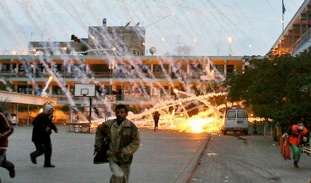

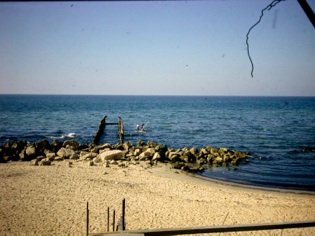
Swee Ang (see below).
Gaza, she comments, is a beautiful place.
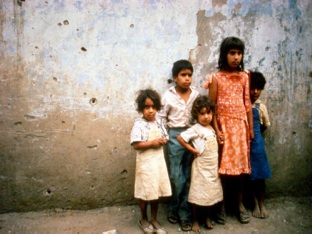
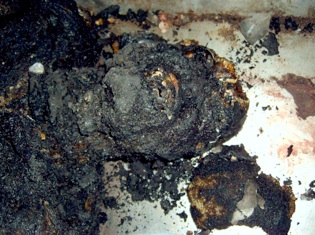
Igniting if touched, children poke it with sticks for fun.
Garden (paid for in fact by the UK). Piece of white phosphorus on the ground.
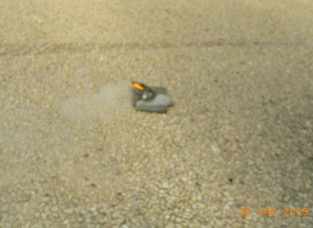
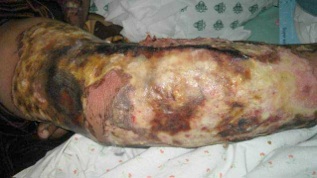
White phosphorus burns.
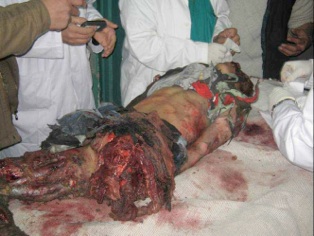
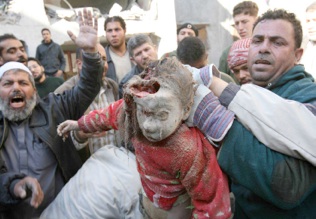
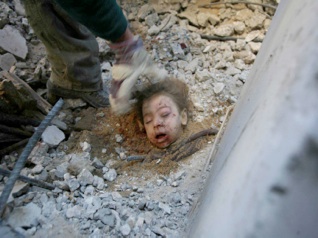
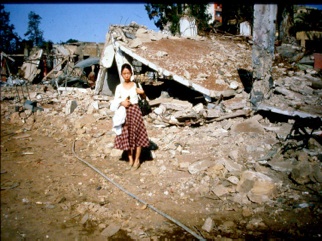
Swee Ang, to whom all the small pictures on this page owe, a consultant surgeon normally resident in the UK, is the founder of Medical Aid for Palestinians. She went to Gaza to assess the needs following the attack.
Gaza Tunnels/ Rafah Crossing
For four years Gaza was kept alive through the network of tunnels under the border with Egypt, through which food, clothes, live animals, cars in pieces, and everything else needed for life, plus some missiles and explosives were smuggled. One had an underground railway. It was a regular ‘industry’ and the government took a tax on the profits. There was extreme danger involved. Some died in collapsed tunnels. In 2009 the Egyptians, under US supervision and with the help of US army engineers, commenced on building an 18 meter deep underground steel wall so that Gaza would be strangled. There was also the threat that the tunnels would be flooded with water. It took an hour to get out of a tunnel.
All is now reversed. With the ousting of Hosni Mubarak in Feb. 2011 construction of the steel wall was halted and on 28 May the Rafah crossing with Egypt was opened. Within 90 mins 200 Palestinians had crossed into Egypt. However the lifting of restrictions is not universal. Refugees tend not to have the necessary ID. And no men between the ages 18-39 may cross unless they have a foreign visa or a place to study at a foreign university.
Israel has condemned the opening, saying that Hamas militants will bring weapons into Gaza.
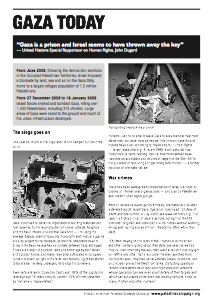
White Phosphorus
Wikimedia Commons
Al Jazeera
Gaza under attack
Wikipedia Commons: Marius Arnesen 1
Smuggling Tunnel
For videos of the tunnels, see below
UN Office for the Co-ordination of Humanitarian Affairs
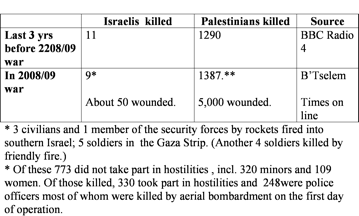
‘We don’t have 5,400 injured. We have one and a half million injured. Everyone is Gaza is traumatized.’ (Palestinian doctor).
‘The conclusion is that Israel is a violent and dangerous country, devoid of all restraints and blatantly ignoring the resolutions of the United Nations Security Council, while not giving a hoot about international law.’
Gideon Levy, Israeli journalist, writing in Ha’aretz 22.01.2009, of the Gaza war.
Gaza is a strip of land about 25 miles long and on average 5 miles wide with few natural resources. Large numbers of refugees fled there at the time of the Nakba of 1948. The present population is almost 1.5 million (3 times the density of Bangladesh). After 38 years of illegal occupation, in 2005 Israel withdrew its 8,000 settlers. Israel now controls Gaza from outside: its land, borders and airspace, while its port has been sealed. In 2006 John Dugard, UN special rapporteur on the OPT, noted: ‘The actions of [Israel] in respect of Gaza have clearly demonstrated that modern technology allows an occupying Power to effectively control a territory even without a military presence.’ Further: ‘Gaza is a prison; and Israel seems to have thrown away the key.’ Its settlers having left, Israel was free to shell Gaza as it would. (For Hamas rockets, see Hamas.)
The Continuing Blockade
In the first place it should be pointed out that the continuing siege should be considered illegal. It constitutes a form of collective punishment of a civilian population, illegal under the Fourth Geneva Convention (1949), Article 33. Further, under that Convention ‘wilfully causing great suffering or serious injuries to body or health’ to the civilian population of an occupied territory is criminalized, Article 147. As High Contracting Parties to the Four Geneva Conventions, individual States are under an obligation to ‘ensure respect’ for the Geneva Conventions ‘in all circumstances’. The ‘Report’ on the attack on the Mavi Marmara issued by the UN Human Rights Council (27 Sept. 2010) declared the blockade unlawful and ‘totally intolerable and unacceptable in the 21st century’. The impunity given to Israel (which wishes to be considered a ‘civilized’, ‘Western’ nation) by the international community in regard to its flouting of its obligations under international law is truly stunning.
After the uproar with which the Israeli attack on a flotilla carrying humanitarian aid to Gaza was met by the international community, Israel felt under pressure to ease its blockade. It was announced, on 20 June 2010, that in future civilian supplies would be let in but not what it called ‘dual-use’ goods unless under international supervision. Instead of there being a list of permitted items there was now one of prohibited items, thus increasing the range of permitted goods. Most foodstuffs were now permitted. Nevertheless the total number of truckloads entering is still only 32% of pre-blockade levels. Only a very limited supply of construction materials, concrete, steel and glass, is permitted and only for public projects. On 14 September UNRWA received approval to bring in materials for 13 projects; just 1.7% of UNRWA’s reconstruction programme. Construction material and fuel for private use are still barred, and exports still prohibited.
This in no way accords with what is needed. In a position paper issued a month later, July 2010, the Palestinian Centre for Human Rights commented:
‘PCHR is concerned that the new Israeli policy is simply shifting Gaza to another form of illegal blockade, one that may become internationally accepted and institutionalized. Palestinians in Gaza may no longer suffer from the same shortage of goods, but they will remain economically dependent and unable to care for themselves as well as socially, culturally and academically isolated from the rest of the world.’
And further:
‘Merely permitting more secondary goods to enter Gaza without allowing the local economy to produce on its own will only increase dependence on outside aid and imports, thus exacerbating the crisis of self-determination and dignity that Palestinians in Gaza find themselves in.’
In November 2010 a wide range of NGOs, 25 in all from a variety of nations, issued a report Dashed Hopes: Continuation of the Gaza Blockade (see bibliography below) expressing the depth of their concern. It is vital that Gaza export: but for this fuel and construction materials are needed to restart the economy. One important product for the export market has always been fruit, fresh flowers and vegetables; but Israel’s delaying tactics (even when these have been allowed through) results in produce simply being left to rot in the fields. There are profound medical needs, both physical and psychological (for giving aid click here). 20% of the Gazan Ministry of Heath budget goes on paying the bills of Palestinians treated abroad; in 2009, 11.9% of the 91 million Shekel bill went to Israeli hospitals!
Furthermore it has now come out (the Israeli human rights group Gisha having won a legal battle obliging the government to release documents) that Israel is carefully calibrating what food and fuel is in Gaza so as to reduce the amounts to keep the population at near starvation level, thus inflicting the maximum pain possible. There is in other words a policy of ‘deliberate reduction’. (Palestine News, Winter 2010/11, p.11.) A cable released by Wikileaks quotes the Israeli National Security Council as writing: ‘The NSC abides by the principal [sic] that Gaza should receive just enough money for the basic needs of the population but is it not interested in returning the Gazan economy to a state of normal commerce and business.’ (Click here).
If the rest of the world (or indeed Israel) wishes peace, the continuing blockade is scarcely conducive to this. A whole generation of young Gazans is growing up in unimaginable deprivation. In such circumstances it is understandable if ‘extremism’ flourishes. What people went through psychologically in the bombardment was traumatic: witness the exhibition of Gazan children’s pictures that has been on tour in the UK. It is their long-term isolation from the rest of the world and the strangulation of their cultural life on the part of Gazans which, even more than the immediate economic needs, concerns outside observers. Meanwhile, if Israel’s aim was to bring down the Hamas government it has singularly failed.
‘Unfortunately not one European country offered to send its navy to render humanitarian assistance to the thousands of injured, hungry, cold and homeless people in Gaza as a result of Israel's attack. Perhaps helping children dying from white phosphorus burns, or just lack of clean water, would be seen as supporting "terrorism”…
In the better past when war broke out in a region the immediate response was often to impose an arms embargo on all sides. But when the defenceless population in Gaza were under attack from the region's strongest army all calls were to prevent the victims from defending themselves. Meanwhile, endless supplies of sophisticated weaponry were sent to the occupier despite its already massive dominance and indiscriminate and criminal attacks on civilians.’
Hasan Abu Nimah ‘The Shortcut to Peace’ 28 Jan. 2009
‘Gaza has now come into the history books in the same way as Guernica, Dresden, Stalingrad. Gaza is a gulag, the only gulag in the Western hemisphere; maintained by democracies; closed-off from food, water, air.’
Col. Desmond Travers, military expert on the Goldstone Committee, in an interview
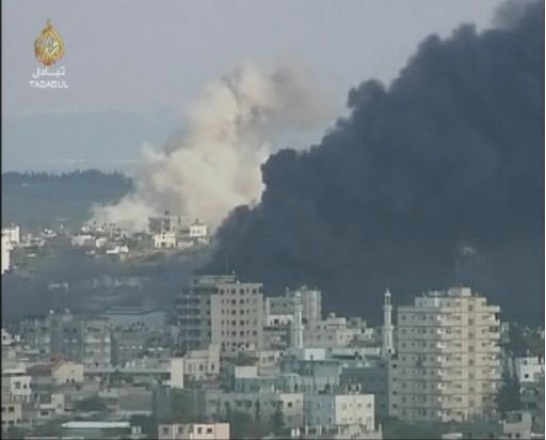

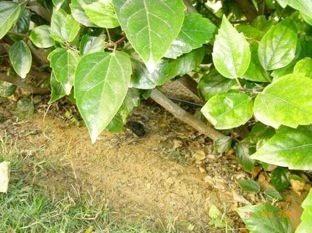
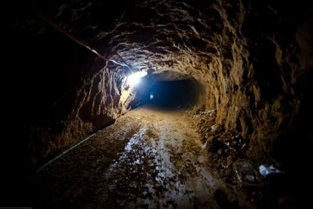
Warning: This page contains photos that some may find disturbing.